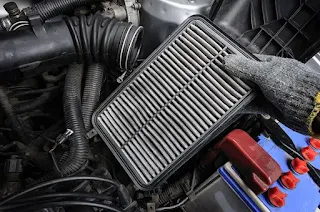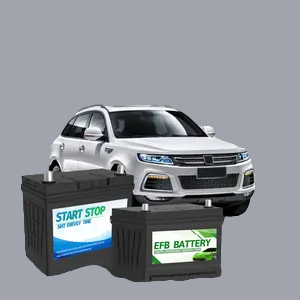What to Do When Your Car's Check Engine Light Comes On A Comprehensive Guide to Car Care and Maintenance
Owning a vehicle is
a sizeable investment, and suitable auto care
is vital to ensure its durability and
performance. One integral element of car care
is knowing how to respond when your
car's test engine is mild. This indicator can be
alarming; however, with the proper information and
proactive approach, you can shield your vehicle, keep its
appearance, and make sure it continues to shine on the road. In
this complete information to automobile care, we
will discover the steps to take when confronted with
a Take a look
at engine mild and furnish treasured pointers to hold your automobile in pinnacle condition.
What are the best car wax products for achieving a long-lasting, glossy finish?
What does it suggest when the engine mild comes on?
The test engine light, regularly represented as an image of an engine or the phrase "Check Engine," is your vehicle's way of saying that something may additionally be amiss underneath the hood. This mild warning can be induced with the aid of a range of issues, ranging from minor to more severe. It's fundamental to pay interest on it, as ignoring it should lead to greater full-size and high-priced troubles down the road.
Step 1: Don't Panic, don't ignore it either.
When the test engine mildly illuminates your dashboard, the first and most critical step is to stay calm. Don't panic, additionally, do not disregard it as unimportant. Your auto is attempting to inform you of something, and it is crucial to tackle the trouble promptly.
Step 2: Check for Obvious Issues
Before in search of expert help, conduct a speedy, visible inspection of your vehicle. Look for something uncommon, such as unfastened or broken wires, disconnected hoses, or an unfastened fuel cap. Sometimes, these easy problems can set off the engine light.
Step 3: Inspect Other Warning Lights
While you are checking your dashboard,
take note of any different warning lights
that may be on. Understanding the full context of
the hassle can help mechanics diagnose
and restore the problem more efficiently.
Step 4: Scan for Diagnostic Trouble Codes (DTCs)
To get a higher perception of what's triggering the take a look at engine light, you may want to operate a diagnostic scan. Many auto components shops provide free code scanning services. Alternatively, you can make investments in a diagnostic scanner for your vehicle, which lets you examine and clear Diagnostic Trouble Codes (DTCs) on your own.
Step 5: Consult a Mechanic
Once you have the DTCs, it is time to seek advice from
a certified mechanic. They can interpret the codes and pinpoint the particular
problem affecting your car. While it may be tempting to attempt DIY repairs, an
expert can furnish specialist preparation and make sure the trouble is resolved
correctly.
Car Care Beyond the Check Engine Light
While taking a look at the engine is essential, auto care goes beyond reacting to warnings. To keep your car's look and defend its longevity, reflect on the following auto care tips:
1. Regular Maintenance: Follow
your car manufacturer's encouraged renovation schedule. Regular oil changes, tyre rotations, and filter replacements are fundamental for your car's health.
2. Keep it Clean:
Regularly wash and wax your automobile to protect its paint and finish. A smooth vehicle no longer solely appears higher but additionally prevents rust and corrosion.
3. Protect the Interior: Use seat
covers, ground mats, and sunshades to guard your
car's interior from wear and tear due
to solar publicity and day-to-day use.
4. Monitor Fluid Levels:
Regularly test and pinnacle off crucial fluids like engine oil, transmission fluid, coolant, and brake fluid.
5. Tyre Care:
Maintain suitable tyre strain and alignment to enhance gas efficiency, handling, and tyre longevity.
6. Drive Responsibly:
Avoid aggressive habits, as they can put unnecessary pressure on your vehicle's engine and components.
7. Be Mindful of Warning Signs:
Don't bypass different warning symptoms such as peculiar noises, uncommon odours, or adjustments in your car's performance. Address these without delay to stop additional damage.
8. Invest in Car Care Products:
Consider the use
of amazing automobile care merchandise such as wax,
polish, and protective coatings
to preserve your automobile at its best.
9. Protect and Shine Car Care
To guard and hold your vehicle's appearance, you can use specialized auto care merchandise like "Protect and Shine Car Care." These merchandise are designed to provide the most reliable safety in opposition to environmental elements whilst improving the shine of your car's exterior.
10. Car Care Blogs and Resources
Stay knowledgeable about contemporary vehicle care
hints and merchandise by following vehicle care blogs and resources. Websites
like "CarCareGuide.com" and "CarsAndShine.com" provide
precious insights into automobile maintenance, protection, and appearance.
The Shining Car
When your car's test engine mildly unexpectedly illuminates, it is a sign from your automobile that something desires attention. While it is herbal to feel concerned, it is now indispensable not to panic. Here's some vehicle care information to help you navigate the situation.
1. Don't ignore it.
The test engine
light regularly represented using an
icon comparable to an engine, is there to shield and shine
auto care. It can signify several issues, from minor to
severe. Ignoring it might also lead
to greater sizable and more expensive troubles down
the road.
2. Check for other symptoms.
Pay attention to any unusual sounds, odours, or adjustments in your car's performance. This extra statistic can help pinpoint the problem when you bring your automobile in for inspection.
3. Consult a professional
The next step in preserving your automobile is to seek professional help. Visit your nearby auto care centre or an auto care expert who can diagnose the trouble with the use of specialised equipment and software. They'll supply precious motors and care insights into the trouble and its doable solutions.
4. Don't DIY (unless you're an expert).
While it is tempting
to store cash by trying to restore the hassle yourself, present-day automobiles are complicated machines
with elaborate systems. Trying to tinker with
your car besides desirable information can lead
to similar damage. Trust
the knowledge of vehicle care professionals.
5. Address the Issue Promptly
Once you have recognized the problem, take action promptly. Delaying fundamental repairs may additionally damage your car's normal fitness and appearance.
6. Regular Maintenance
Prevent future test engine mild troubles by preserving your auto according to the manufacturer's recommendations. Regular oil changes, tune-ups, and inspections are key to vehicle care and retaining your automobile in pinnacle condition.
7. Car Care Protection
Consider investing in an
auto care safety diagram that
covers sudden restoration costs. This
can provide peace
of mind and help you preserve your auto-strolling smoothly.
Conclusion
Caring for your vehicle is
a duty that comes with vehicle ownership. When the
engine light comes on, it is a sign that
your car desires attention. Follow the steps outlined in this information to tackle the difficulty without
delay and make sure your automobile continues to shine
on the road. Additionally, adopting a complete vehicle care
routine, as referred to above, will now
not only defend your funding but also preserve your car's appearance for
years to come. Remember, a well-maintained and
well-protected vehicle is a reflection of
your dedication to accountable automobile possession and
your dedication to maintaining its beauty and performance.








